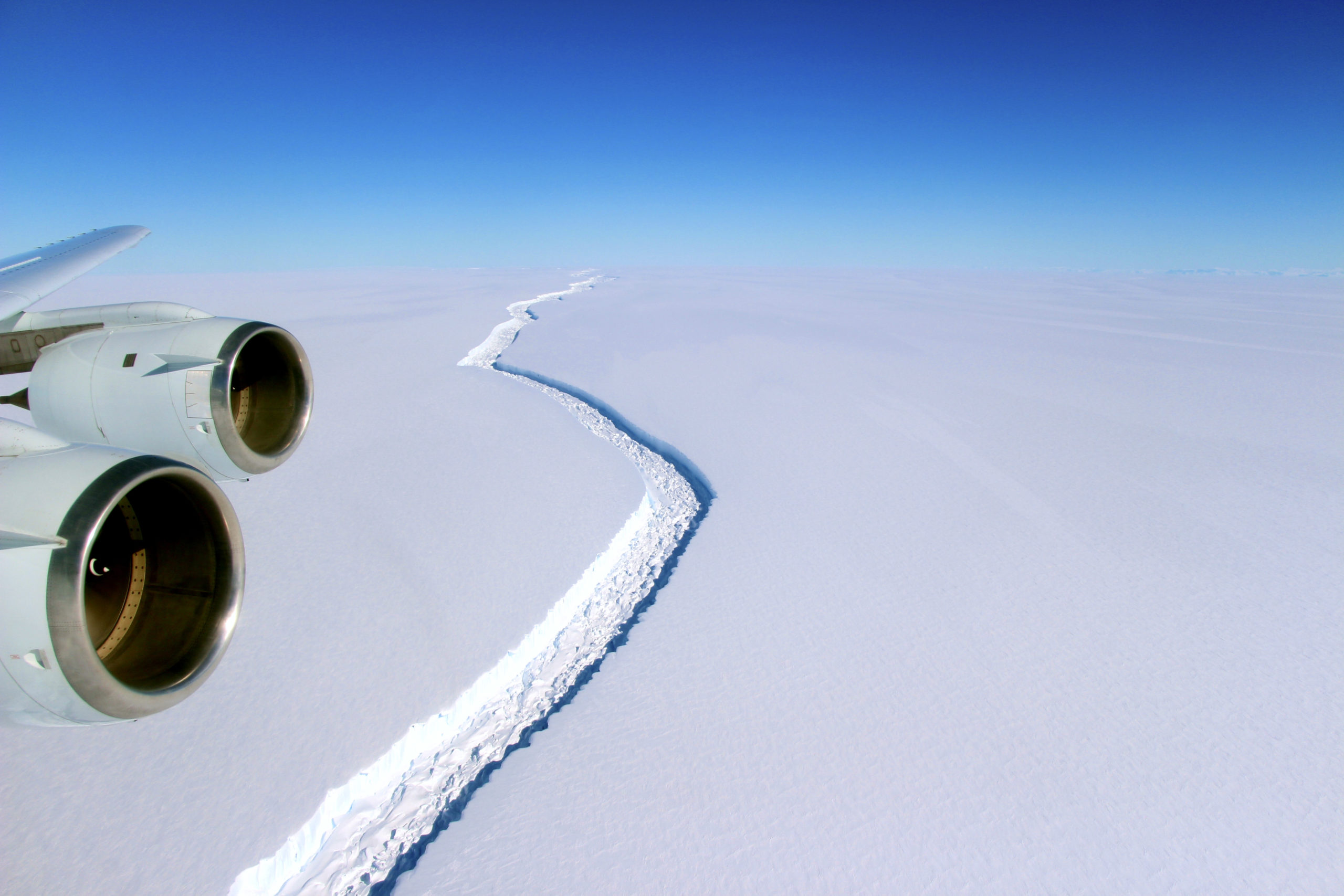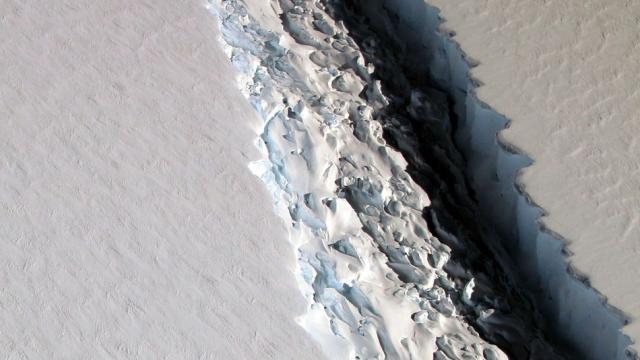Scientists have been watching a giant rift in Antarctica’s Larsen C ice shelf for many years, but the crack grew substantially this past December, prompting concerns that it’s about to break free. The resulting iceberg is expected to be one of largest ever recorded.
Rift in the Larsen C ice shelf as seen on 10 November 2016. (Image: NASA/John Sonntag)
According to geologists with the MIDAS project, a mere 20km now separates the western most point of the crack to the ocean. The rift has been advancing steadily over the past few months, but it grew by a whopping 18km during the second half of December. A calving event, in which the 5000 square km ice shelf will break free from its parent shelf, is now all but inevitable, and it could even happen this year.
“When it calves, the Larsen C Ice Shelf will lose more than 10% of its area to leave the ice front at its most retreated position ever recorded,” note the MIDAS geologists in a statement. “This event will fundamentally change the landscape of the Antarctic Peninsula.”

The current location of the rift on Larsen C, as of January 2017. (Image: MIDAS Project)
Speaking to the BBC, project leader Adrian Luckman said he’d “be amazed” if it doesn’t break free in the next few months, proclaiming, “I think it’s inevitable.”
The resulting 350m-thick iceberg is expected to float on the seas at the edge of West Antarctica, where it could wallow for years, slowly breaking up into smaller and smaller pieces. The iceberg is expected to be one of the 10 largest ever recorded, and nearly twice the size of Rhode Island. The event would be reminiscent of the collapse of Larsen B in 2002.

Rift in the Larsen C ice shelf as seen on November 10, 2016. (Image: NASA/John Sonntag)
This could leave the remaining ice shelf vulnerable to future break-ups, but the researchers caution that climate change may not be the driving factor (more research is needed); calving is a natural, cyclical process. Should it happen, the calving of Larsen C could seriously destabilise the remaining ice shelf, causing the whole thing to collapse in the coming years and decades. If that happens, global waters would rise by 10cm.
[Projec MIDAS, BBC]
